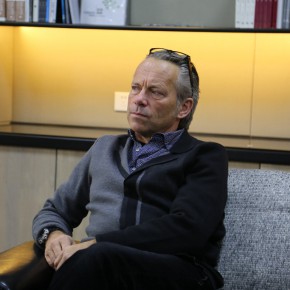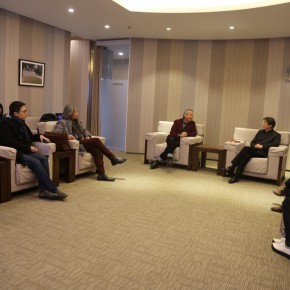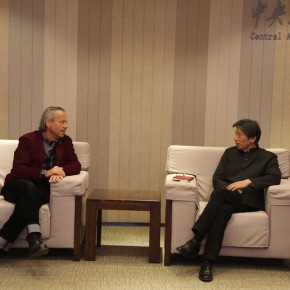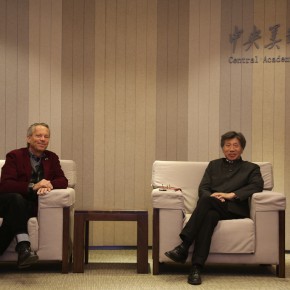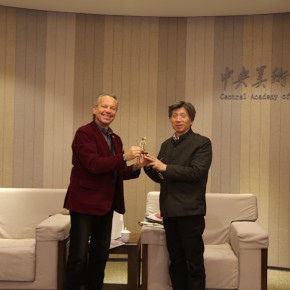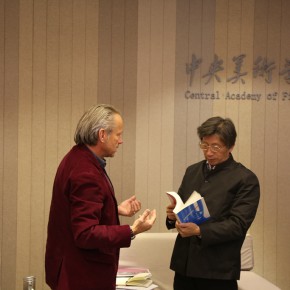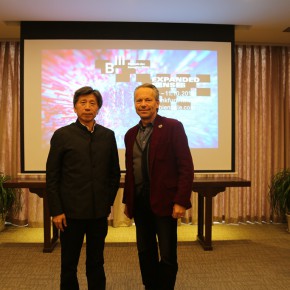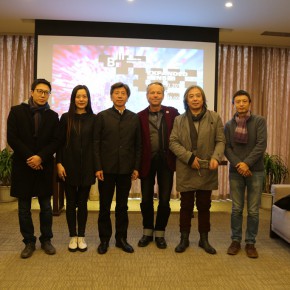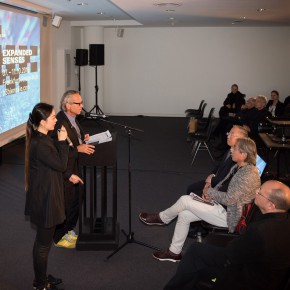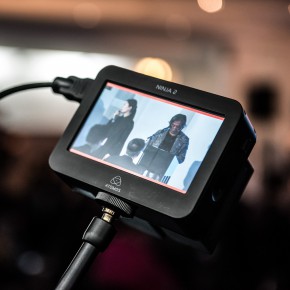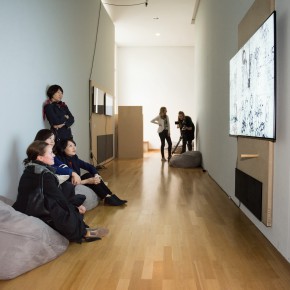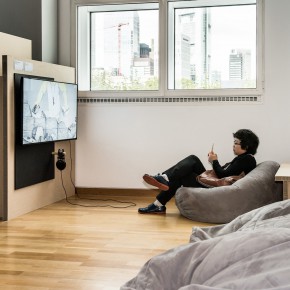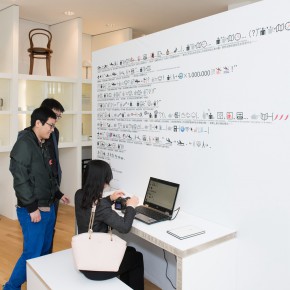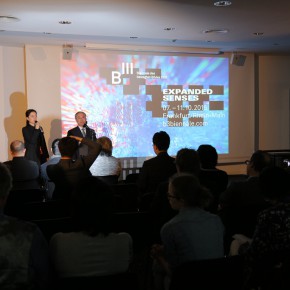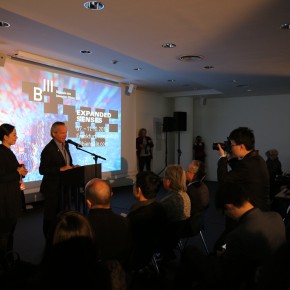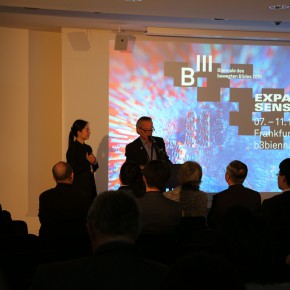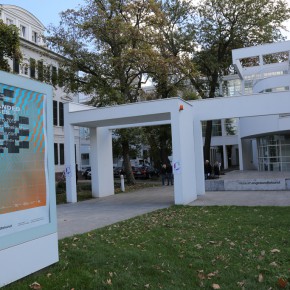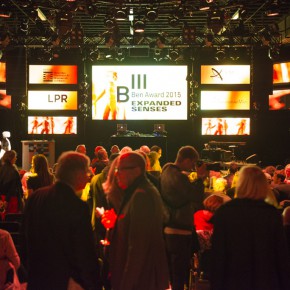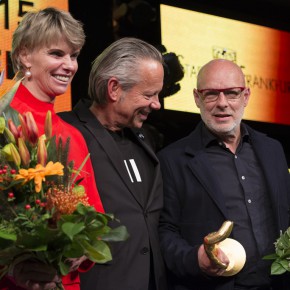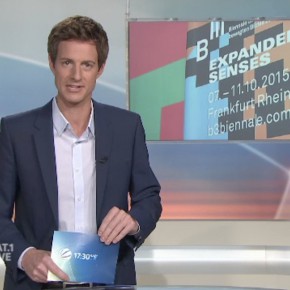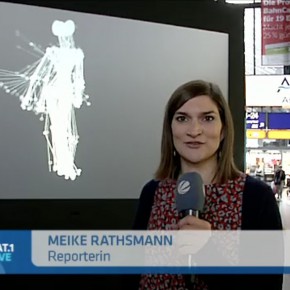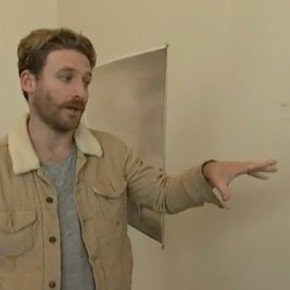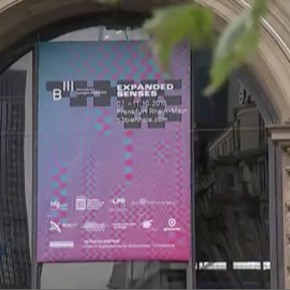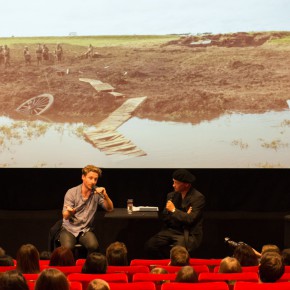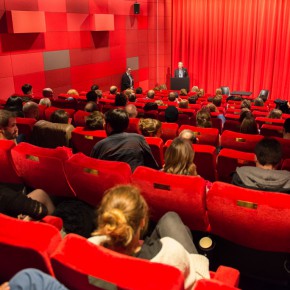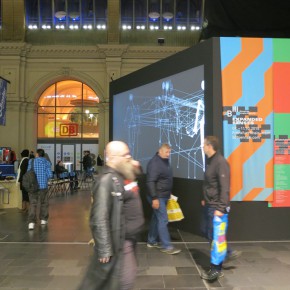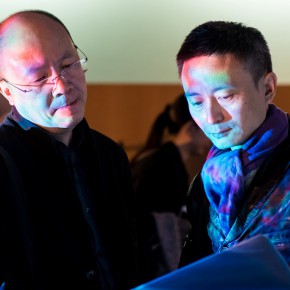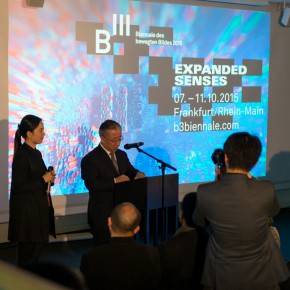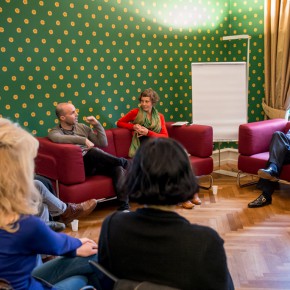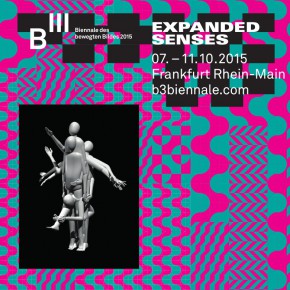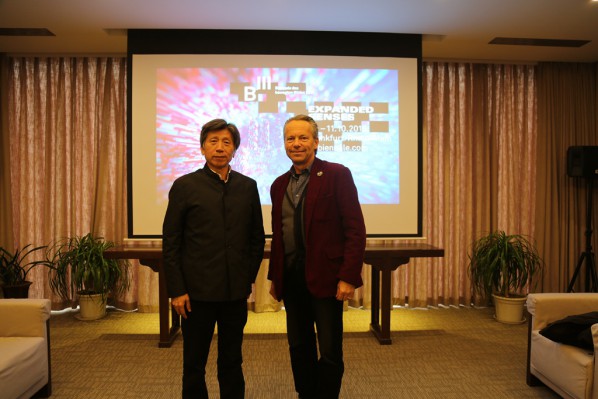
The second iteration of the B3 Biennial of the Moving Image took place in Frankfurt and the Rhine-Main region in autumn 2015 under the guiding theme: Expanded Senses: Experiencing with all Senses and Shifting Boundaries. The goal of the festival, which started in 2013, is to create a broad alliance for the moving image. In doing so, the Biennial acts in an interdisciplinary way and transcends genres, offering an international platform for the discourse and networking of makers of film and television, artists, designers, scholars, technology providers, industry participants, and up-and-coming talents. In 2015 the B3 offers a special insight into China's contemporary art scene. Ten Chinese media and concept artist were then on show in Frankfurt. However, the exhibition was not understood as a pure presentation of moving image material, but aims to cast an even more innovative perspective for the creative process of the works. In an exclusive interview, CAFA ART INFO took the opportunity to talk with Prof. Bernd Kracke about B3 Biennial in Beijing.
Bernd Kracke (born 1954), has been the President of HfG Offenbach since September 15, 2006. He has been Professor for Electronic Media at HfG Offenbach since 1999 and was the Dean of the School of Art (formerly Visual Communication departmen) from 2001 to 2006. He founded the CrossMediaLab as a platform for research and experimentation on networking analogue and digital technologies as well as their innovative application in an arts and design context. Here, he drew on his experience from his work at M.I.T. Cambridge/USA (1979 to 1985) and the Academy of Media Arts Cologne (1991 to 1999) as well as his long-standing work as an independent media designer and artist. Kracke is a co-founder, board member and committee spokesperson of Hessen Film and Media Academy and the initiator and director of the B3 Biennial of the Moving Image.
CAFA ART INFO: First of all, from the perspective of the curator, would you talk about your understanding of how the Moving Image has expanded our new senses thus expanded our world?
Bernd Kracke: Last year, the reliability and the existence of the moving image expanded amazingly because the accessibility of production and distribution of the moving image has increased, so nowadays we can produce moving images with our smart phones, we can upload to YouTube and other platforms completely independent from television and from cinema where we used to have the moving images, now it becomes like an everyday item. So I think this is already like an amazing step ahead in the history of the moving image in general. Of course the further extensions we see in virtual reality, in artificial reality be courageous for example, or even in artificial intelligence and robotics, so the moving images are not just like a postcard to the world, it’s much more like a really productive extension of our sensory apparatus.
CAFA ART INFO: Some scientists, hackers, filmmakers are working to blur sensory boundaries even further, what’s new and exciting that you have found in 2015 B3 Biennial of the Moving Image held in Frankfurt and the Rhine-Main region this autumn?Bernd Kracke: As I said for one thing, not only are artists but technologists are really experimenting with the senses and with the moving images. For example, we had some really interesting guests from the East working with the artificial intelligence and robotics, so it’s very experimental and very advanced. I think the combination of art, science and technology is the new max big thing and the next step we can expect are really exciting new kind of tools and new insights into our lives from these expansions.
CAFA ART INFO: What do you think is the biggest challenge and advantage of B3 Biennial facing its developments?Bernd Kracke: First of all, I think we have to expand the B3 format to further international reach and to differentiate from the established form, like a fair, media festival and art shop. B3 is more than that, more like a content based platform that hopefully contributes some meaningful insights to the 21st century.
CAFA ART INFO: In the autumn of 2015 the B3 is offered a special insight into China's contemporary art scene. Ten Chinese media and concept artists were on show in Frankfurt after these selected works were presented at Moving In Time: B3 + Beijing. What have you seen in these works from Chinese artists? How do the audiences based in Europe understand their work and influence?Bernd Kracke: First of all, it’s very good information for the European audience to see how advanced Chinese artists are attempting to using technology and really deal with new content so I think that it was a really very important step to make so that it is accessible in Europe for one thing and then again it was very interesting for Europeans to see how Chinese artists combine old and traditional technologies and the artistic expressions have a new technology in each new year, for example, Tang Bohua who uses woodcut as a basis for a really interesting animation, I think it’s an amazing transition to integrate this order and new things. The comedies are really down-to-earth. Woodcut in animation is very unique and very special. And Fei Jun produces really interesting intact work which is very impressive, we show the translation on a broad scale to the audience so in general it’s very interesting information for the European audience to see the progress of Chinese motion images work and it has to be continued, plus we did show the established artist Xu Bing with his really fascinating work of word characters which people like very much because of the unusual form and the tension and the amination and we saw a lot of young artists as well, you know the transition from old to young was visible as well so that was good. Ma Qiusha, Rainbow, is a very interesting female performance piece with an unusual visual appearance which was really interesting. Geng Xue with her nice, black and white type on Michelangelo and this transposition of all the new traditions and contemporary expressions which was an interesting piece we just saw in the show of the exhibition. Fei was really interesting. I like this piece very much, Geng Yi, documental film, ‘barking’, which really shows how Chinese culture deals with animals and with particularly dogs, this is very unusual for European eyes. This is really common for Chinese eyes, but very unusual for European eyes. So it is really a challenge to show it. ‘Heave’s Will’ by Li Pengfei was an interesting video and a really good traditional context and very nice setup for a video. Then I’ll talk about ‘the song of joy’ By Tian Xiaolei. We had selected quite a range of different animation, which was very strong for the whole feel of animation. I think China has a strong basis and probably a strong future that I saw that was to provoke, this almost provokes animation. Wang Weisi, Mysterious Earth and young people, it is again a comment on political and cultural development in China, a really funny animation. I like it very much. Jin Jun’s work is more like data oriented in an environmental information context, very interesting and challenging project. Miao Xiaochun’s disillusion piece. We like it very much because it has neorealist animation with aspects of provoked experience and provoked expression of animation. People like it very much in Germany at B3 I think. The piece by Liu Xinyi, Rise of the 20th Century, was a very interesting political commentary which was nice but still like a political kind of comment on the development of Chinese politics and culture.
CAFA ART INFO: Did they find identity with these Chinese emerging artists at the exhibition? Did they find some cultural identity or some relationship with the Chinese artists at the exhibition?Bernd Kracke: Well I think some of the things are pretty global meanwhile, I mean the transition from east to west and from west to east is much more present and much faster than it used to be, so I think some of the young artists look very globalized in their imaginary creations so it’s very understandable on one side and a very general expression in the 21st century.
CAFA ART INFO: Will you continue this cooperation with CAFA on the basis of the B3 platform in the future to introduce more Chinese artists’ works to the European world?Bernd Kracke: We are just talking about future possibilities and would very much like to definitely continue this productive cooperation. I think it would be interesting to integrate more eastern or Chinese Asian influences and the Western influences and maybe chose some artists from Europe and from the West and here in China as well and also mix them together, this would be the next big step. We started B3 in Beijing, which can be expanded and transformed into an even bigger platform for cooperation here in China, and then on the other side in Germany, so I think the balance between east and west could be really productive and interesting.
CAFA ART INFO: Would you like to talk with us about your future plan with the education of the Central Academy of Fine Arts, about art education?Bernd Kracke: Besides the platform of B3 which is like a showcase which shows the results of the work, I think we should use this platform to work together on projects and exchange more students and really integrate them into this whole process and exchange faculty, so there is close understanding of both worlds and hopefully something more comes out of it from putting East and West together to be more than just two things on a third level of the new global 21st century generation and artistic expression and again I think the baseline is really the combination of art, science and technology, I mean, that’s a big challenge for the 21st century. I think CAFA is working on it and we are working on it as there is a lot of interest throughout the world to participate and then see the results. So that’s a big challenge.
CAFA ART INFO: B3 Biennial of the Moving Images means experiencing the future, what kind of new trends or tendencies do you find in this edition of B3? And what do you expect to experience in the future as a practitioner of media designer?Bernd Kracke: One big kind of interest of B3 is to expand boundaries. As we said, for the first B3, we worked on expanding the innovation, for the second B3, we work on expanding the senses. In general, we want to expand the boundaries, and now we are fantasizing about maybe using the whole city and other parts of space for an expression of new technology and relationships like this global communication network that is being propelled by for example the internet that is everywhere already, I think that is a big opportunity to generate completely new artistic expression and new sights where art is happening, so we want to get out of the museum, out of the gallery, out of the closed space, more into the open theater, more into the environment, more into the cosmic context, so it has to be very big.
It has been edited according to recording, and the caption is added by the editor.
Text Recording by Helen Jiang, edited by Sue/CAFA ART INFO



